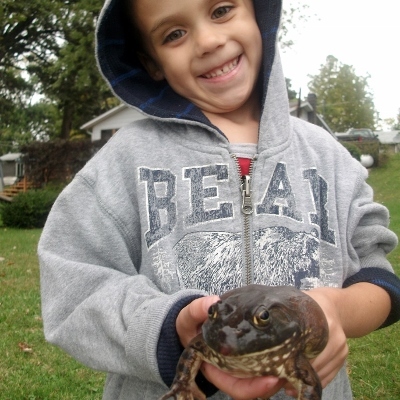 Curious (adjective) – marked by a desire to investigate and learn. (Merriam-Webster)
Curious (adjective) – marked by a desire to investigate and learn. (Merriam-Webster)
As a parent you may sometimes grow weary of your child’s seemingly endless questions. Why can’t I tickle myself? Why doesn’t my goldfish sleep? Why does the moon glow at night? The questions can go on and on, but if you think about it, being inquisitive is an asset. If a young person is engaged and energized by the world, learning will be much easier later on. Rest assured, those why questions help lay the ground work for future school success.
Three ways to promote curiosity in your preschooler.
1. Ask your own why questions.
Instead of waiting for your young child to ask you “why,” look for opportunities to explore questions and answers. For example, cooking, which is actually a fun form of science, creates a host of learning opportunities. The next time you bake a cake together, ask your child why they think the batter goes into the oven runny and comes out solid. By doing this, you can introduce simple concepts such as the effects of temperature. There are many other chances during the course of a typical day to ask your child why…so be on the lookout for them!
2. Be curious yourself.
Explore…grow…learn. You are your child’s best role model in life. Your views towards learning are no exception – even a preschooler will pick up on the fact that you enjoy the process of discovery. How do you express a sense of wonder at the world?
Here are a few ways:
- Visit your local library with your child and explore books on various topics in the children’s department together.
- Take advantage of age-appropriate events at local colleges and museums. They often have events geared towards pre-school children. And be excited about it!
- Slow down. Walk with your child through your own yard and/or neighborhood and take time to drink in nature. In effect, just be there to share in your child’s discoveries about his or her own world.
- Travel. The United States offers endless chances for discovery, so you don’t have to go abroad to learn something new. Each state boasts glorious natural resources, cultural festivals, farmer’s markets, historical sites…the key is to take your child to them.
3. Let children know it’s ok to think “outside the box.”
Try to encourage children to look at objects in different ways. For example, a huge cardboard box does not have to go immediately into the recycling bin; it can be transformed into a fort. Also, an old milk jug can be transformed into a musical instrument, a pot for seeds, or even a bank. Looking at the everyday goods in our world from different perspectives will help a child with problem-solving skills, as well as helping to build his or her imagination. Another benefit of creating a child who can see the world in new ways is that you most likely will never have to hear these dreaded words – I’m bored!
Any teacher will tell you that much of the motivation to learn comes from inside a child. A young person who has not developed a sense of awe and wonder about his or her surroundings at an early age may not be as likely to succeed in school. Remember, you don’t have to be a scientist to spur the imagination of a young person; you just need to be willing to explore the whys in life yourself. Doing so sets the stage for a love of life-long learning in your child.
“You can teach a student a lesson for a day; but if you can teach him to learn by creating curiosity, he will continue the learning process as long as he lives.” — Clay Bedford










